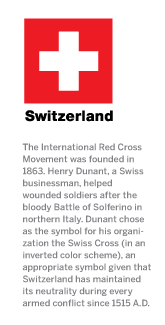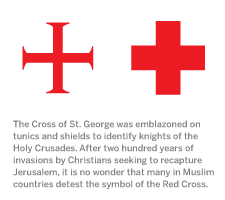Today, in our multi-cultural and wonderfully diverse world, there is a heightened sensitivity to political correctness, particularly in branding and corporate identity design. No one, particularly a business or international organization, wants to appear to be offensive to any other culture, religion, or ethnicity.
This is particularly true when it comes to religion, and in light of the tension that exists between those of Jewish, Christian and Islamic faith. Any part of a design that can be perceived as having religious connotation is removed, or avoided altogether. For example, a traditional star shape with five points might be perceived as either a pentagram (symbolic of Satanic cults) or a Christian star, while a six-pointed star references the Jewish Star of David. Because of this hypersensitivity to religion, one of the most internationally recognizable symbols is on the verge of losing its effectiveness and intended meaning—the symbol for the International Red Cross Movement.

The religious connotations of the symbols of the International Red Cross and Red Crescent, although falsely applied, have hindered Israel’s Magen David Adom relief society from joining the movement. In consideration of being sensitive to the beliefs of Judaism, a new symbol was adopted during the Geneva Convention of 2005—the Red Crystal. According to Conference resolutions, the third accepted symbols is “devoid of any political, religious or other connotation.” What is essentially a rotated red frame, it may be used on its own, or frame either the Red Cross, the Red Crescent, or the Red Shield of David.
By: Ryan Hembree




